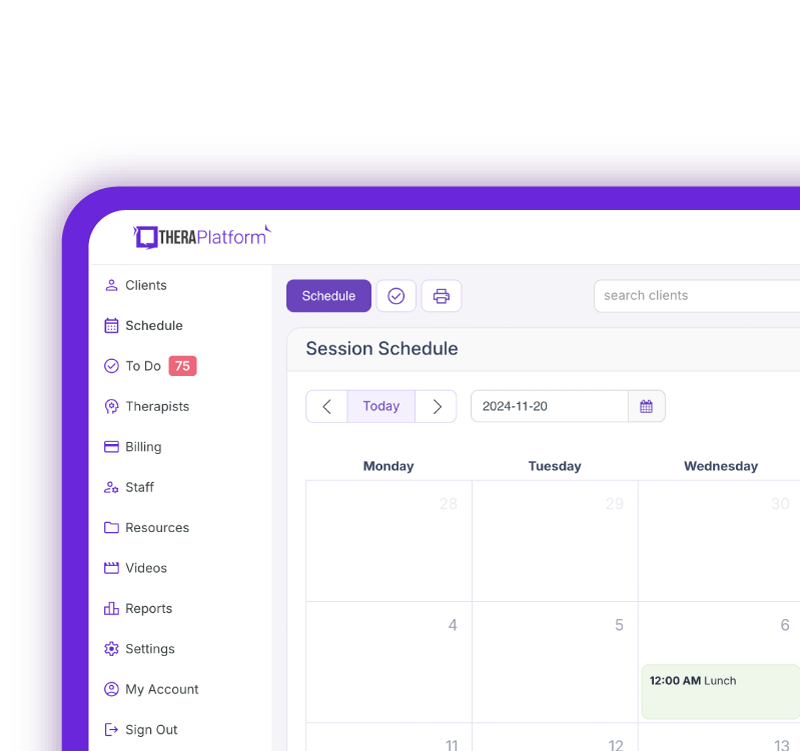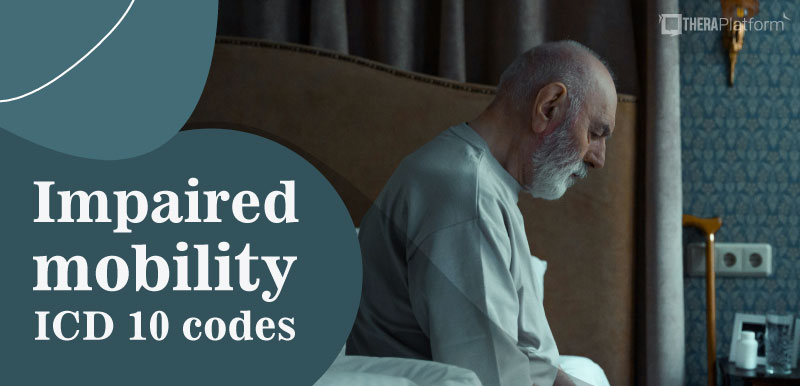Chronic pain ICD 10 code

Chronic pain ICD 10 code is used to describe a condition that is a worldwide problem leading to the loss of income, reduced mobility and health-related quality of life of many individuals. In the rehab world, we tend to distinguish between ongoing pain and chronic pain. While both are long-lasting forms of pain, ongoing pain can be tied to ongoing tissue injury. This might occur in someone who continues to re-aggravate an injury through their work activities, a patient living with cancer or someone suffering from painful peripheral neuropathy.
Summary
- Physical therapists play a key role in treating chronic pain, which may persist even after tissue healing due to central sensitization mechanisms in the central nervous system.
- G89.2,the basic ICD-10 code for chronic pain, is not typically reimbursable due to its lack of specificity. Therapists should instead use more detailed codes like G89.21 (chronic pain due to trauma) or G89.4 (chronic pain syndrome) and consider adding codes that describe functional limitations to improve insurance approval.
- Codes must be specific, and therapists are encouraged to document functional impairments alongside the primary pain diagnosis to justify medical necessity. Enrolling in an insurance billing course for therapists can help providers enhance their knowledge of coding.
- Automation and batching through an EHR like TheraPlatform can help reduce errors, save time, and increase claim acceptance rates, improving workflow efficiency for therapists.
→ Click here to enroll in our free on-demand Insurance Billing for Therapists video course [Enroll Now]
The term chronic pain is often reserved for those conditions in which the original injury is healed; however, through central sensitization mechanisms in the CNS, individuals continue to experience pain. In either case, physical therapists play an important role in managing persistent pain.
According to an NIH study published in 2023 by Nahin et al., exploring chronic pain in the years 2019-2020, the incidence of new chronic pain cases was 52.4 cases per 1,000 persons per year, significantly higher than the incidence of other common chronic conditions such as diabetes (7.1 cases/1,000 per year), depression (15.9 cases/ 1,000 per year), and hypertension (45.3 cases/1,000 per year). Almost two-thirds of those reporting chronic pain in 2019 still had chronic pain a year later while only 10% of those with chronic pain in 2019 were pain-free by 2020. Authors defined chronic pain as lasting longer than 3 months, regardless of origin.
Streamline your insurance billing with One EHR
- Claim batching
- Auto claims
- Automated EOB & ERA
- Real-time claim validation
- Real-time claim tracking
- Aging and other reports

The term chronic pain encompasses pain from various origins.
People with chronic pain can experience the following types of pain:
- Neuropathic pain
- Nociceptive pain
- Musculoskeletal pain
- Inflammatory pain
- Psychogenic pain
- Mechanical pain
Physical therapists play an essential role in reducing dependence on opioid pain medications and improving health-related quality of life amongst those suffering from chronic pain. Because chronic pain is so prevalent, you will likely encounter this diagnosis in your practice.
Understanding how to correctly utilize the chronic pain ICD 10 code is imperative for minimizing insurance claim denials and improving the chance that important physical therapy services will be covered by a patient’s insurance.
If you, like many therapists, have some experience searching for and selecting ICD-10 codes but have a limited understanding of the who, what, when and why these codes are used, see the next section for an ICD-10 code primer. Following this introduction we will discuss the chronic pain ICD-10 code in more detail.
Watch this video to learn common insurance billing struggles and solutions
→ Start My Free Trial
→ Start My Free Trial
An introduction to ICD-10 codes
Who: All HIPAA-covered entities are required to submit ICD-10 codes if seeking reimbursement for services from an insurance company, this includes physical therapists.
What: The International Classification of Disease, 10th Revision (ICD-10) is a set of diagnosis, symptom, and procedure codes that physical therapists use daily in their practice. In 2015 physical therapists and all other HIPAA-covered healthcare providers transitioned from the ICD-9 to the current version, ICD-10. ICD-10 codes are alphanumeric codes. They begin with a letter and are always between three and seven characters with a decimal point placed after the third character. The more characters it has, the more specific it is. Each code follows the following structure:
Characters 1-3 indicate the category of the diagnosis Characters 4-6 indicate etiology, anatomic site, severity or other clinical detail
Character 7 is an extension value, for example:
A: initial encounter (anything related to care of the initial injury)
D: subsequent encounter (anything related to the phase of routine care of the injury while the patient recovers–this usually refers to rehabilitation)
S: sequela (other conditions that may result from the presence of the primary condition)
Note, for fracture care, there are several more extensions ( example: P, G, K, which signify malunion, delayed healing, or nonunion for a subsequent encounter)
When: ICD-10 codes must be submitted with relevant documentation whenever reimbursement is sought for covered services either by the healthcare entity itself or by a patient.
Why: While it may seem like an extra step in an already detailed process of documentation and billing, ICD-10 codes are required for a specific reason. Not only do they identify a medical diagnosis, but perhaps more importantly, they help insurance companies understand why the care you are providing is medically necessary and therefore, reimbursable.
Practice Management + EHR + Telehealth
Mange more in less time in your practice with TheraPlatform

.
What is the chronic pain ICD 10 code?
There are many different ICD-10 codes related to pain. The chronic pain ICD 10 code, G89.2 is the basic code, not elsewhere classified. This code set opposes the G89.1 code set which describes acute forms of pain.
When selecting ICD-10 codes, the code with the highest number of applicable characters should be chosen, at least on the first visit. Many three and sometimes four and five-digit codes can be found for a given condition when searching a reputable database like ICD10 Data. The chronic pain ICD 10 code G89.2 is not considered specific enough and therefore is not reimbursable. Instead, other more detailed codes are considered specific enough to be reimbursable:
ICD 10 code | Condition |
Chronic pain due to trauma | |
Chronic post-thoracotomy pain | |
Other chronic postprocedural pain | |
Other chronic pain | |
Neoplasm-related pain (acute) (chronic) | |
Chronic pain syndrome |
As you can see, post-trauma, thoracotomy and procedural pain along with neoplasm-related pain are the only origins of pain specified. Other causes of chronic pain will likely fall under “other” chronic pain or chronic pain syndrome.
Tips for using chronic pain ICD 10 codes
If chronic pain is the primary symptom you are treating, report this as your primary code. Because insurance companies like Medicare want to see that you are addressing the functional implications of patient symptoms, consider, when appropriate, including some additional codes that describe pain-related functional limitations that you are also addressing with your interventions. Here are some examples:
ICD 10 code | Condition |
|---|---|
Difficulty in walking, not elsewhere classified | |
R26.81 | Unsteadiness on feet |
R26.89 | Other abnormalities of gait and mobility |
Unspecified abnormalities of gait and mobility | |
Z74.09 | Other reduced mobility |
Z74.1 | Need for assistance with personal care |
Z99.3 | Dependence on wheelchair |
R29.6 | At risk for falls/ repeated falls |
The science of chronic pain and the best way to approach chronic pain can differ based on the cause of the pain. Physical therapists who work with chronic pain should consider taking continuing education courses that outline the latest evidence-based approaches to treating chronic pain and educating patients and clients about chronic pain including how to apply the biopsychosocial model to chronic pain management.
You should also utilize validated outcome measures to track patient pain and pain-related symptoms to assess the effectiveness of your treatments.
Some useful outcome measures can include the:
- Numerical Pain Rating Scale or Visual Analog Scale
- Oswestry Low Back Pain Disability Questionnaire
- Brief Pain Inventory
- Pain Self-Efficacy Questionnaire (PSEQ)
- Short-Form McGill Pain Questionnaire 2 (SF-MPQ-2)
- Functional Pain Scale
The Centers for Medicare and Medicaid Services publish an updated list of ICD-10 codes each year to go into effect October 1 and remain in effect until September 30 of the following year. Sites like ICD10 Data can also be helpful in identifying code changes once they update their list as announced on their homepage. With proper training and an understanding of billing and documentation practices for chronic pain ICD 10 codes, you can positively impact patients’ lives and join the ranks of healthcare professionals fighting to improve outcomes for those living with chronic pain.
Practice Management + EHR + Telehealth
Mange more in less time in your practice with TheraPlatform

.
How EHR and practice management software can save you time with insurance billing for therapists
EHRs with integrated billing software and clearing houses, such as TheraPlatform, offer therapists significant advantages in creating an efficient insurance billing process. The key is minimizing the amount of time dedicated to developing, sending, and tracking medical claims through features such as automation and batching.
What are automation and batching?
- Automation refers to setting up software to perform tasks with limited human interaction.
- Batching or performing administrative tasks in blocks of time at once allows you to perform a task from a single entry point with less clicking.
Which billing and medical claim tasks can be automated and batched through billing software?
- Invoices: Create multiple invoices for multiple clients with a click or two of a button or set up auto-invoice creation, and the software will automatically create invoices for you at the preferred time. You can even have the system automatically send invoices to your clients.
- Credit card processing: Charge multiple clients with a click of a button or set up auto credit card billing, and the billing software will automatically charge the card (easier than swiping!)
- Email payment reminders: Never manually send another reminder email for payment again, or skip this altogether by enabling auto credit card charges.
- Automated claim creation and submission: Batch multiple claims with one button click or turn auto claim creation and submission on.
- Live claim validation: The system reviews each claim to catch any human errors before submission, saving you time and reducing rejected claims.
- Automated payment posting: Streamline posting procedures for paid medical claims with ERA. When insurance offers ERA, all their payments will post automatically on TheraPlatform's EHR.
- Tracking: Track payment and profits, including aging invoices, overdue invoices, transactions, billed services, service providers.
Utilizing billing software integrated with an EHR and practice management software can make storing and sharing billing and insurance easy and save providers time when it comes to insurance billing for therapists.
Streamline your practice with One EHR
- Scheduling
- Flexible notes
- Template library
- Billing & payments
- Insurance claims
- Client portal
- Telehealth
- E-fax

Resources
TheraPlatform is an all-in-one EHR, practice management, and teletherapy software built for therapists to help them save time on admin tasks. It offers a 30-day risk-free trial with no credit card required and supports different industries and sizes of practices, including physical therapists in group and solo practices.
More resources
- Therapy resources and worksheets
- Therapy private practice courses
- Ultimate teletherapy ebook
- The Ultimate Insurance Billing Guide for Therapists
- The Ultimate Guide to Starting a Private Therapy Practice
- Mental health credentialing
- Insurance billing 101
- Practice management tools
- Behavioral Health tools
Free video classes
- Free on-demand insurance billing for therapist course
- Free mini video lessons to enhance your private practice
- 9 Admin tasks to automate in your private practice
References
Nahin RL, Feinberg T, Kapos FP, Terman GW. Estimated Rates of Incident and Persistent Chronic Pain Among US Adults, 2019-2020. JAMA Netw Open. 2023. doi: 10.1001/jamanetworkopen.2023.13563



